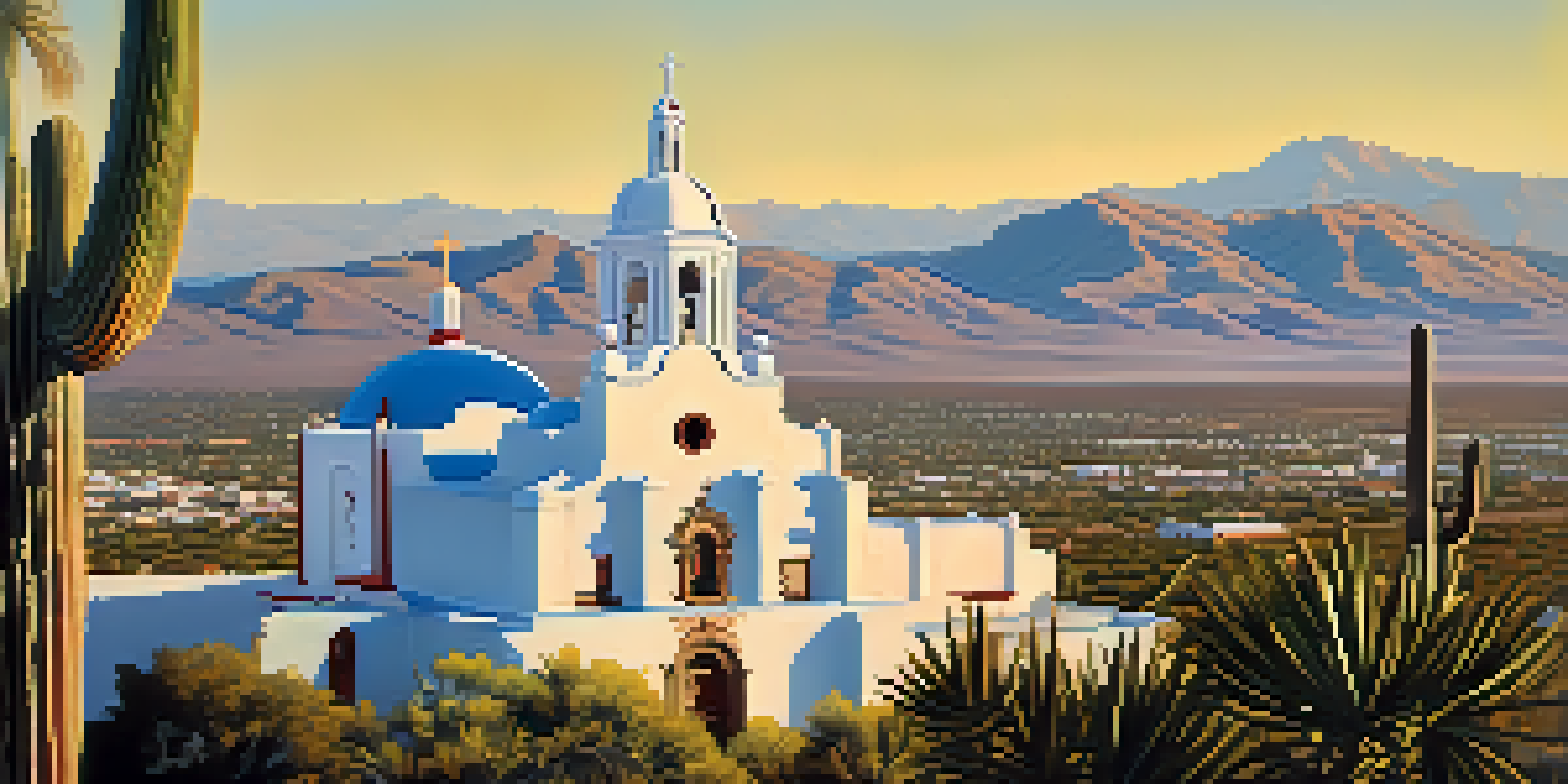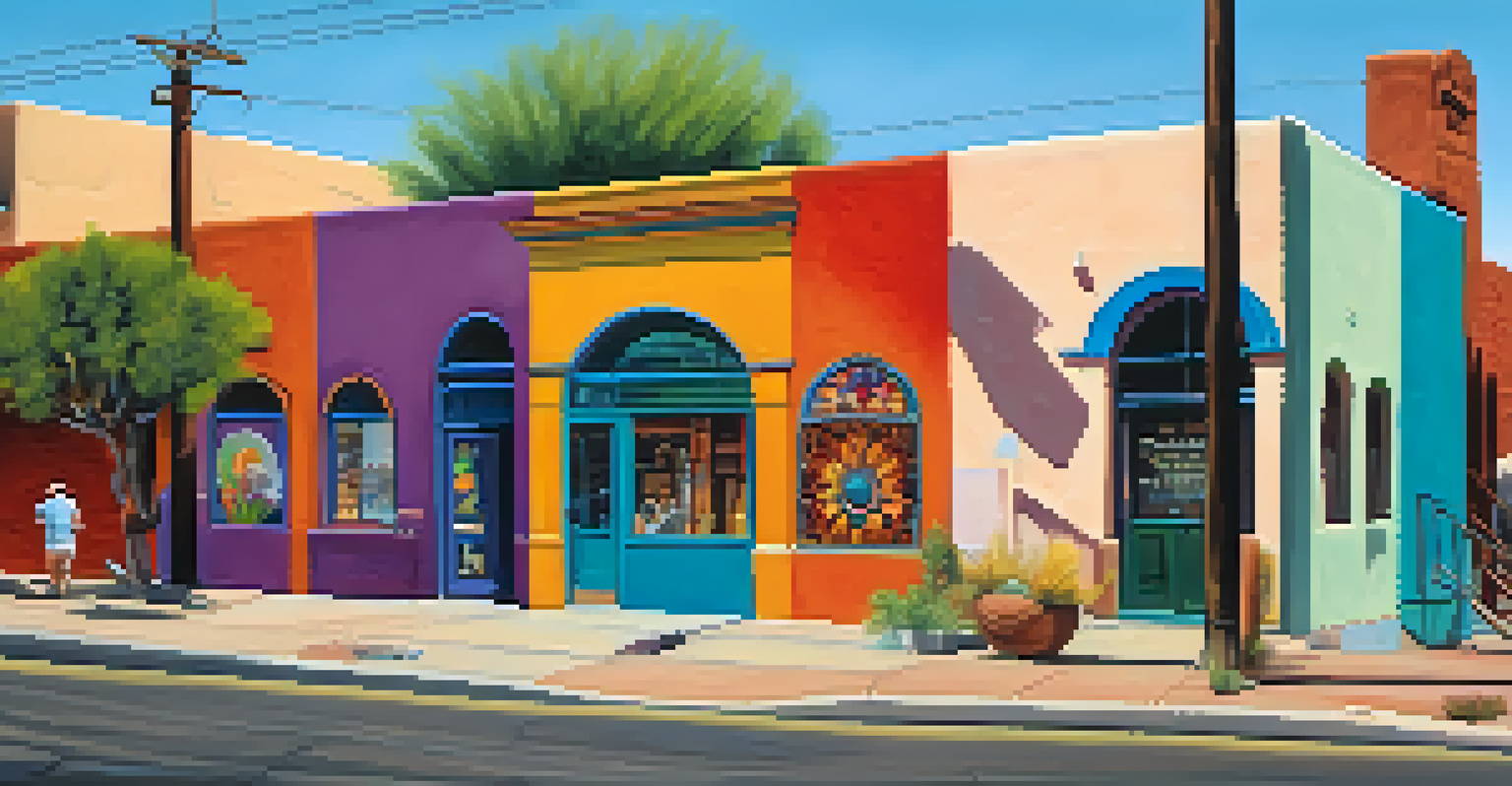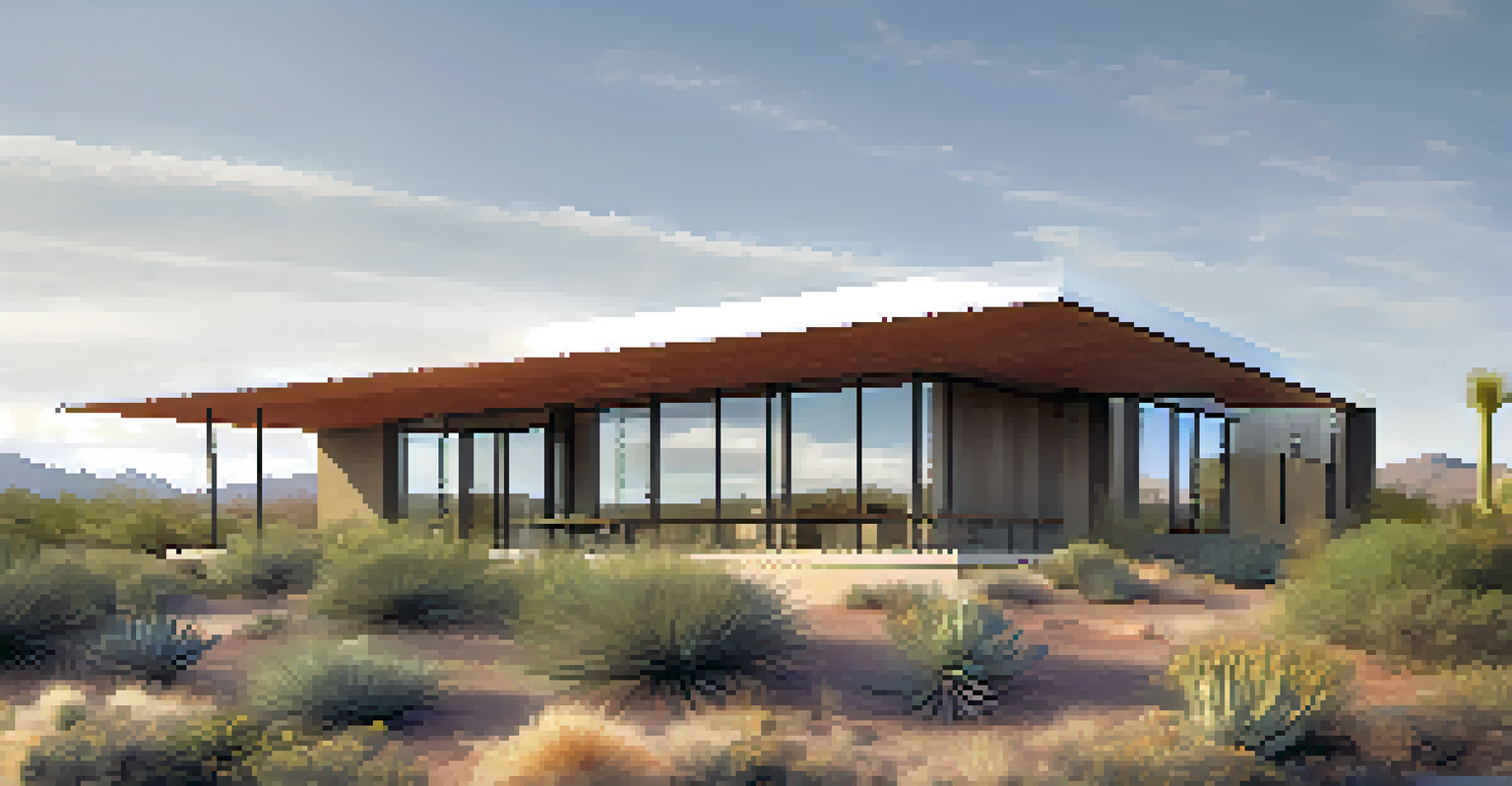Architecture of Tucson: A Blend of Cultures and Styles

Tucson's Architectural History: A Cultural Mosaic
Tucson's architecture is a vibrant tapestry woven from various cultural influences. From Native American structures to Spanish Colonial designs, each era has left its mark on the city. Walking through Tucson feels like flipping through the pages of a history book, with each building telling a different story.
Architecture is the thoughtful making of space.
The influence of the Tohono O'odham and Pueblo peoples is evident in the traditional adobe homes, characterized by their thick walls and flat roofs. These designs not only reflect the climate but also the cultural values of harmony with the land. As you stroll through neighborhoods, you can almost hear the whispers of history in the walls.
As Tucson grew, it embraced other styles, such as Spanish Colonial Revival in the 20th century, which introduced arches and vibrant tiles. This blend of influences creates a unique landscape that captures the essence of Tucson's diverse heritage.
Iconic Structures: Landmarks of Tucson
Among Tucson's architectural treasures, the Mission San Xavier del Bac stands out as a beacon of beauty and history. Founded in the late 18th century, this mission showcases the stunning Baroque style with intricate carvings and vibrant frescoes. It's a place where visitors can not only admire the architecture but also connect with the spiritual essence of the region.

Another striking landmark is the Arizona-Sonora Desert Museum, which integrates architecture with nature beautifully. Its design mimics the surrounding desert landscape, creating a seamless blend that enhances the visitor experience. This innovative approach speaks to Tucson's commitment to preserving its natural beauty while celebrating architectural creativity.
Tucson's Cultural Architectural Tapestry
Tucson's architecture showcases a blend of influences, from Native American to Spanish Colonial, reflecting its rich cultural history.
The historic El Presidio neighborhood is also worth mentioning, with its charming adobe homes and narrow streets. This area reflects the city's origins, showcasing how architecture has evolved while remaining true to its roots. Each home has its own story, inviting exploration and appreciation for Tucson's rich past.
Modern Architecture: A New Wave in Tucson
While Tucson cherishes its historical roots, modern architecture has also made a significant impact on the city. Innovative designs and sustainable practices are at the forefront of new developments. Buildings like the UA Science and Technology Park showcase cutting-edge architecture that complements Tucson's unique character.
The greatest architect is not the one who builds the best buildings, but the one who builds the best communities.
These modern structures often incorporate eco-friendly materials and energy-efficient designs, reflecting a commitment to sustainability. For example, many new buildings utilize solar panels and green roofs, aligning with Tucson's sunny climate. This fusion of modernity and environmental consciousness is a testament to the city's forward-thinking approach.
Through this modern architectural wave, Tucson continues to evolve while respecting its rich history. The city is not just preserving the past; it's also crafting a future that embraces innovation and creativity, resulting in a dynamic urban landscape.
Cultural Events: Celebrating Architectural Heritage
Tucson's architectural heritage is celebrated through various cultural events that bring the community together. The annual Tucson Modernism Week showcases mid-century architecture and design, offering tours and discussions that highlight the city's unique styles. It's a fantastic opportunity for residents and visitors to appreciate Tucson's architectural evolution.
Events like the Tucson Historic Preservation Foundation's tours allow participants to explore neighborhoods and learn about the history behind iconic buildings. These experiences foster a deeper understanding of how architecture shapes cultural identity and community pride. It's an invitation to connect with the stories that buildings tell.
Modern Design Meets Sustainability
The city embraces innovative architecture that prioritizes eco-friendly practices and energy efficiency in new developments.
Such events not only celebrate Tucson's architectural diversity but also encourage preservation efforts. By raising awareness and appreciation for these structures, the community plays an active role in ensuring that the city's rich architectural tapestry continues to thrive for future generations.
Sustainable Architecture: Tucson's Green Future
Sustainability is becoming a core principle in Tucson's architectural landscape, with a focus on eco-friendly practices. Many new buildings are designed with energy efficiency in mind, harnessing natural resources like sunlight and wind. This commitment to sustainability is not just a trend but a necessity in combating climate change.
For instance, the use of passive solar design in homes maximizes natural light and minimizes energy consumption. Buildings are increasingly featuring elements like thermal mass, which helps regulate indoor temperatures. This not only benefits the environment but also lowers utility bills for residents.
Moreover, Tucson's architecture often reflects the local landscape, using materials that minimize environmental impact. This harmonious relationship between design and nature is a hallmark of the city’s approach to building, ensuring that Tucson remains a beautiful and sustainable place to live.
Art and Architecture: A Creative Collaboration
Art and architecture in Tucson often intertwine, creating spaces that are both functional and visually stunning. Public art installations and murals can be found throughout the city, enriching the architectural landscape. This collaboration between artists and architects adds a vibrant layer to Tucson's identity.
For example, the Tucson Arts District showcases how creativity can influence urban design. The area's buildings are adorned with colorful murals that reflect the city's cultural diversity, inviting exploration and engagement. This blending of art and architecture fosters a sense of community and pride among residents.
Community Celebrates Architectural Heritage
Cultural events like Tucson Modernism Week foster appreciation for the city's diverse architectural styles and encourage preservation efforts.
Such collaborations not only beautify the environment but also tell stories of the people and cultures that shape Tucson. They remind us that architecture isn't just about structures; it's about creating spaces that inspire and connect people.
The Future of Tucson's Architecture: Embracing Change
As Tucson continues to grow, its architectural landscape is poised for exciting changes. Embracing innovation while honoring its rich history will be key to the city's development. The balance between preserving the past and welcoming the future is a challenge that Tucson is ready to tackle.
New projects are emerging that reflect contemporary design trends while being sensitive to the environment and cultural heritage. Architects are increasingly collaborating with local communities to ensure that new developments resonate with the city's identity. This inclusive approach fosters a sense of ownership and pride among residents.

Looking ahead, Tucson's architecture will likely continue to evolve, reflecting the dynamic nature of its community. By blending tradition with modernity, the city can create a built environment that is not only beautiful but also meaningful, capturing the spirit of Tucson for generations to come.